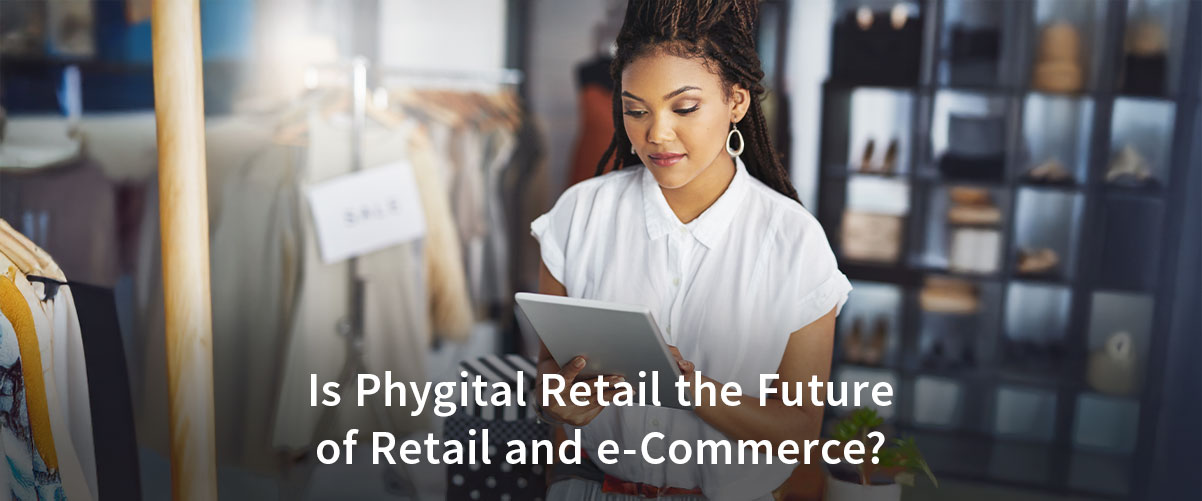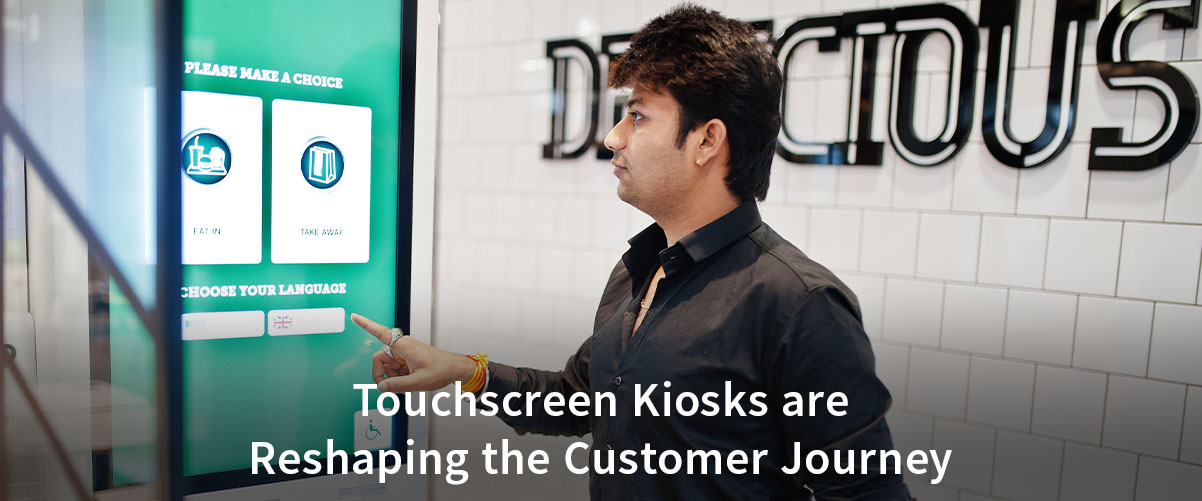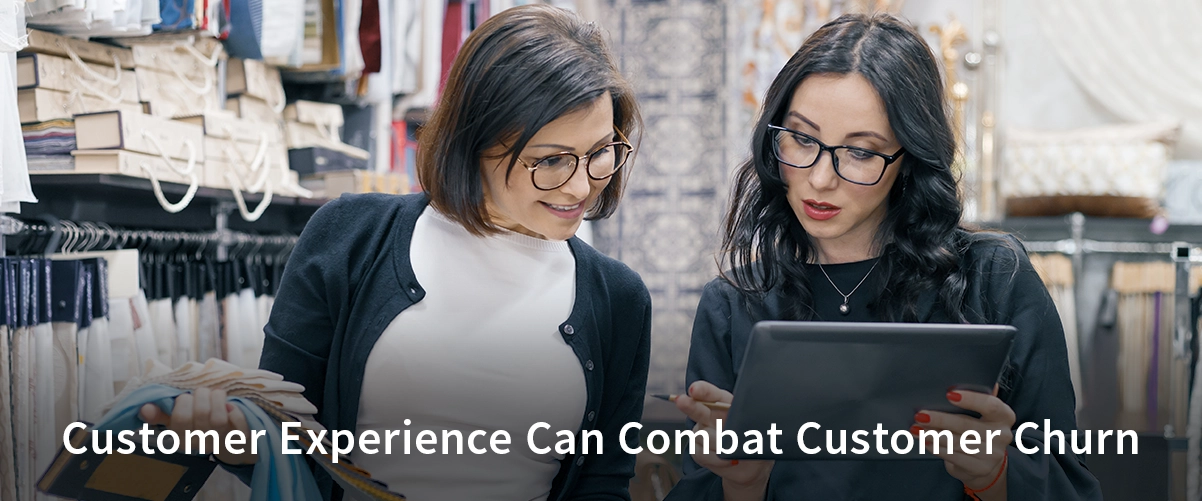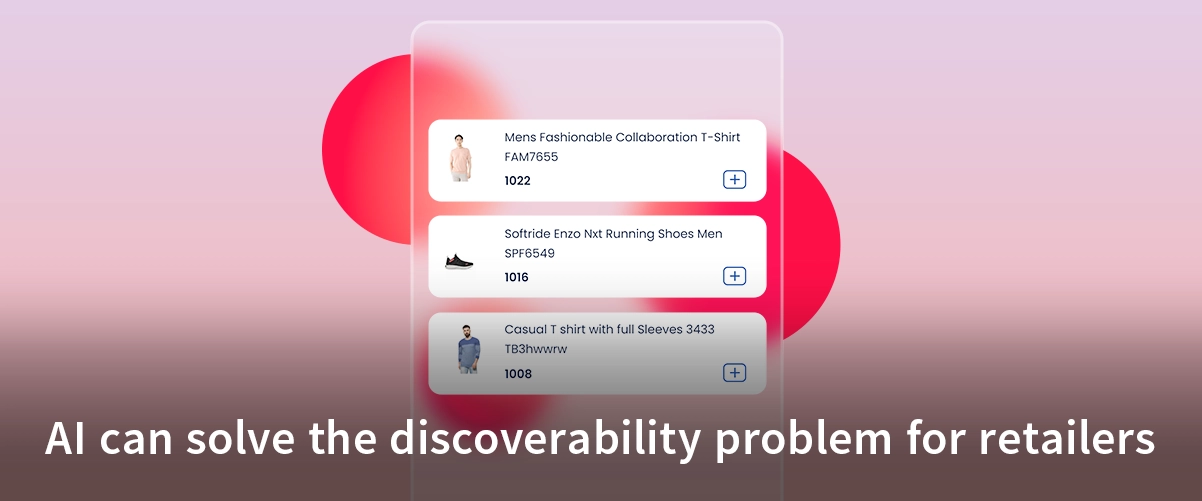
10 Benefits of Cloud Computing in Retail Industry



Managing multi-channel retail operations isn’t just a challenge but an opportunity in today’s fast-paced retail landscape. Today’s consumers love shopping across various platforms, whether physical stores, e-Commerce websites, social media, or marketplaces. This means businesses need to up their game and have a robust strategy that ensures seamless integration and exceptional customer experiences. In this blog, we will outline six effective strategies that will help you manage multi-channel retail operations and also explain why ETP V5, our Omni-channel Retail Solution, is the perfect solution to handle these complexities.
Multi-channel retail refers to selling products across various platforms to meet customers where they shop. This includes physical stores, online platforms, mobile apps, and third-party marketplaces. While it broadens the customer base, managing operations across these channels demands efficiency, consistency, and precision.
One of the common challenges in multi-channel retail is managing inventory. Inconsistencies in stock levels can lead to customer dissatisfaction, overstocking, or lost sales.
ETP V5 Solution: ETP V5 offers centralised inventory management, enabling real-time visibility and seamless stock updates across all channels.
Another critical aspect of multi-channel retail is efficient order fulfillment wherein customers often expect quick and accurate delivery, regardless of where they have purchased from.
ETP V5 Solution: ETP V5 facilitates seamless order fulfillment by integrating all channels, providing accurate data, and automating workflows to enhance efficiency.
The third important aspect of multi-channel retail is making your customers feel that they are engaging with a familiar brand whether shopping online or in-store. And how do you do it? By enhancing your customer’s experience and being consistent with it! Yes, consistency is key to building customer trust and loyalty.
ETP V5 Solution: With ETP V5’s omni-channel retail capabilities, retailers can deliver a consistent brand experience, from promotions to personalised services.
Ever wondered how some retailers always seem to have exactly what their customers are looking for, right when they need it? Yes, an effective marketing strategy will help you be one such retailer. It ensures you reach the right audience on the right platform at the right time.
ETP V5 Solution: ETP V5 integrates marketing tools to execute, monitor, and optimise campaigns, ensuring cohesive messaging and impactful results.
Modern technology is the backbone of successful multi-channel retail operations, seamlessly connecting every sales channel to deliver a unified shopping experience. From advanced inventory management systems to personalised customer engagement tools, technology empowers retailers to stay agile, meet customer demands, and drive growth in an increasingly competitive market. It’s not just about keeping up with trends—it’s about creating a retail ecosystem that thrives on efficiency, adaptability, and innovation.
ETP V5 Solution: ETP V5 is a scalable retail management platform that integrates sales, inventory, CRM, and analytics, making it the perfect solution for managing multi-channel retail operations.
Last but not least, making data-driven decisions! Data-driven decisions are essential for multi-channel success because they turn insights into impactful actions. By analysing customer behaviour, sales trends, and inventory performance across all channels, retailers can make informed choices that enhance the shopping experience and optimise operations. Whether it’s personalising promotions, forecasting demand, or ensuring the right products are available at the right time, leveraging data helps retailers stay ahead in a dynamic market.
ETP V5 Solution: With its advanced analytics and reporting features, ETP V5 provides actionable insights to improve decision-making and optimise operations.
ETP V5 is a robust retail management solution designed to address the complexities of multi-channel retailing. Here’s why it’s the ideal choice for retailers:
By choosing ETP V5, retailers gain a comprehensive solution that simplifies multi-channel management, boosts efficiency, and enhances customer satisfaction.
Managing multi-channel retail operations requires a strategic approach and the right technology. By centralising inventory, streamlining order fulfillment, ensuring consistent customer experiences, optimising marketing, leveraging technology, and focusing on analytics, retailers can thrive in today’s competitive market.
With ETP V5, businesses gain a powerful ally in managing the complexities of multi-channel retail. Its comprehensive features and real-time capabilities make it the perfect solution for achieving operational excellence and delivering exceptional customer experiences.

In the rapidly evolving retail landscape, the term “phygital” has gained significant traction. A blend of “physical” and “digital,” phygital retail represents the seamless integration of physical and digital experiences, creating a unified and enhanced shopping journey for consumers. This approach is not just a trend; it’s becoming a cornerstone of modern retail strategies. But is phygital retail truly the future of retail and e-Commerce? Let’s explore.
Phygital retail is all about blending the tactile experience of physical stores with the convenience and efficiency of digital platforms. This hybrid approach leverages the strengths of both realms to provide consumers with a holistic shopping experience. The rise of phygital retail can be attributed to several key factors:
The phygital retail model offers numerous benefits for both retailers and consumers:
ETP Unify, the powerful cloud-native platform by ETP Group is at the forefront of enabling phygital retail experiences. Our comprehensive suite of unified commerce solutions is designed to seamlessly integrate physical and digital touchpoints, providing a consistent and engaging customer journey. Here’s how ETP Unify helps in the phygital retail context:
Phygital retail is not just a buzzword; it represents the future of retail and e-Commerce. By blending the strengths of physical and digital experiences, retailers can create a more engaging, efficient, and personalised shopping journey for their customers. ETP Unify is committed to helping retailers navigate this transformation, providing the tools and solutions needed to thrive in the phygital retail landscape.
As we move forward, the lines between physical and digital retail will continue to blur, making it essential for retailers to embrace the phygital approach. With ETP Unify, you can stay ahead of the curve and deliver exceptional experiences that keep your customers coming back for more.

Chinese New Year, also known as the Spring Festival, is an occasion for rejoicing, celebrating, and, above all, sales. The largest holiday in China’s cultural calendar brings a sea of consumer spending that can prove to be the difference between being in the red and black. To be ready to cash in on this gold rush, retailers must be geared up, flexible, and prompt. This is where ETP Unify—the powerful, cloud-native unified commerce retail platform—comes in.
As we step into the year 2025, according to the Chinese zodiac calendar, we welcome the Year of the Snake. The ‘Snake’ symbolises wisdom, intuition, and prosperity. It is believed that the Year of the Snake would be a period of transformation and growth. This period is very auspicious for retailers to:
Chinese New Year shopping is characterised by increased purchases of gifts, food, clothing, and decorations. Retailers need to ensure their shelves are stocked with popular items. ETP Unify has advanced inventory management features that enable retailers to keep stock at optimal levels, avoiding stockouts or overstocking. ETP Unify’s real-time inventory tracking and automated replenishment ensure the right products are available at the right time.
Read our blog on the benefits of ETP’s Unified Inventory Management System
Shoppers during Chinese New Year expect hassle-free and fun shopping experiences. ETP Unify assists retailers in enhancing customer experience through:
ETP Unify helps retailers make every customer feel valued, whether through special discounts, festive offers, or personalised greetings.
Today’s customers expect seamless shopping across all channels—online, in-store, or mobile. ETP Unify ensures an integrated shopping experience by synchronising sales channels. This provides a unified view of inventory, orders, and customer data, helping retailers maximise sales opportunities.
The surge in sales during Chinese New Year can overwhelm unprepared retailers. ETP Unify offers agility and scalability to handle increased sales volumes efficiently. Its scalable infrastructure supports expansion, such as:
To capitalise on Chinese New Year, understanding consumer behaviour and market trends is crucial. ETP Unify provides actionable insights into customer preferences, sales trends, and product performance. Retailers can make informed decisions regarding:
ETP Unify offers a holistic suite of retail management solutions, helping retailers optimise inventory, enhance customer experiences, integrate omni-channel operations, scale their businesses, and make data-driven decisions. By using ETP Unify, retailers can maximise sales during Chinese New Year and achieve long-term success in the ever-changing retail landscape.

In today’s fast-paced world, consumers demand convenience and efficiency in every aspect of their lives. This is especially true when it comes to shopping. Traditional checkout lines have been a staple of retail for decades. However, the advent of technology has revolutionised the way we shop, and self-checkout is at the forefront of this transformation.
The first self-checkout systems were introduced in the 1990s, but they were initially met with skepticism and resistance. However, as technology advanced and consumer preferences changed, self-checkout gradually gained popularity. Today, it’s a common feature in supermarkets, convenience stores, and even some specialty retailers.
Self-checkout isn’t just a trend; it’s a necessity. It offers a multitude of benefits for both retailers and shoppers:
Designed to revolutionise the shopping experience.
Our self-checkout kiosks are easy to use. Simply scan the items in your shopping basket, pay using your preferred method, and go. The system uses advanced technology to accurately identify and total your items, ensuring a hassle-free checkout process.
Our self-checkout solution is a game-changer for retailers and shoppers alike. By providing a faster, more convenient, and safer checkout experience, we’re helping to redefine the future of retail. To know more about our Self-checkout Solution write to us at contactus@etpgroup.com
By embracing innovative technologies like self-checkout, we’re not just transforming the way people shop; we’re shaping the future of retail. Join us in redefining the shopping experience and experiencing the convenience and efficiency of our self-checkout solution firsthand.

As retailers navigate the ever-evolving landscape of consumer behaviors, technological advancements, and economic shifts, 2024 has offered invaluable lessons that can shape future strategies. The retail sector has witnessed a significant transformation, driven by digital innovation and changing customer expectations. In this blog, we will explore key takeaways from 2024 that retailers can implement to enhance their operations, improve customer experiences, and stay competitive.
One of the most significant trends of 2024 has been the accelerated adoption of omnichannel retailing. Consumers now expect a seamless shopping experience across all touchpoints—be it in-store, online, or via mobile applications. Retailers have learned that integrating various sales channels is not just a convenience; it’s a necessity.
The ability to harness data analytics has proven crucial for retailers in 2024. With the vast amount of data available, retailers can gain insights into customer preferences, inventory management, and sales trends.
Sustainability has emerged as a key concern for consumers in 2024. Retailers have learned that adopting sustainable practices is not only beneficial for the environment but also essential for building brand loyalty.
In an age where consumers have numerous options, providing an exceptional customer experience is more critical than ever. Retailers have learned that personalised and engaging experiences can significantly impact customer loyalty.
2024 has highlighted the importance of keeping up with technological advancements. Retailers who embrace new technologies can streamline operations and enhance customer engagement.
The disruptions caused by global events have taught retailers the importance of supply chain resilience. Those who adapted quickly were able to maintain operations and meet customer demands.
Retailers have learned that building a strong community presence can significantly impact brand loyalty. Engaging with local communities fosters trust and enhances customer relationships.
The lessons learned in 2024 have provided retailers with a roadmap for future success. By embracing omnichannel retailing, leveraging data analytics, prioritising sustainability, enhancing customer experience, adopting technological innovations, strengthening supply chains, and fostering community engagement, retailers can navigate the challenges ahead and thrive in an increasingly competitive market.

Touchscreen kiosks have emerged as a pivotal tool in the retail industry, revolutionizing the way businesses interact with customers and streamline operations. By offering a blend of technology and convenience, these interactive devices are reshaping the future of retail.
Touchscreen kiosks have significantly influenced customer behavior in retail settings. Here’s a deeper dive into how these devices are shaping the way consumers interact with brands:
By addressing these challenges and embracing future trends, retailers can leverage touchscreen kiosks to create seamless, engaging, and profitable shopping experiences. Moreover, by embracing touchscreen kiosks, retailers can stay ahead of the curve, deliver exceptional customer experiences, and drive business growth. As technology continues to advance, the potential of these devices to revolutionise the retail industry is limitless.

Customer Experience (CX) is the sum total of all interactions a customer has with your brand. It’s the emotional journey a customer takes from initial awareness to post-purchase satisfaction. A positive CX can lead to increased customer loyalty, repeat business, and positive word-of-mouth. Conversely, a negative CX can result in customer churn, negative reviews, and lost revenue.
Customer churn, the rate at which customers stop doing business with you, can be influenced by various factors, including:
As the retail landscape continues to evolve, customer experience will remain a critical differentiator. By investing in innovative technologies, personalised interactions, and seamless journeys, businesses can stay ahead of the curve. Let’s embrace the future of retail, where customer satisfaction is the ultimate goal.
ETP Unify’s CRM module is a powerful tool to combat customer churn by fostering strong customer relationships and driving loyalty. By centralising customer data and enabling personalised interactions, retailers can significantly reduce customer attrition.
By implementing these strategies, retailers can strengthen customer relationships, increase customer satisfaction, and ultimately reduce customer churn. ETP Unify’s CRM module empowers businesses to deliver exceptional customer experiences and drive long-term growth.

In today’s digital age, consumers have access to an unprecedented amount of information. However, this abundance of choice has also created a new challenge: discoverability. Retailers, both big and small, struggle to connect with their target audience and ensure that their products are found by the right people at the right time.
The root of this problem lies in the language gap between customers and brands. Customers often use natural language to describe their needs and preferences, while brands use product descriptions and keywords optimized for search engines. This mismatch can lead to missed opportunities and frustrated customers.
Artificial Intelligence (AI) has emerged as a powerful tool to address this language gap and improve discoverability for retailers. By leveraging advanced algorithms and machine learning techniques, AI can help retailers understand the nuances of customer language and match it to the appropriate products.
Here are some specific ways AI can be used to solve the discoverability problem:
Artificial Intelligence (AI) is reshaping the retail landscape, offering innovative solutions to optimise operations and enhance customer experiences. By harnessing the power of AI, retailers can gain deeper insights into their business, make data-driven decisions, and streamline processes.
As AI technology continues to advance, we can expect even more innovative solutions to the discoverability problem. Some potential future developments include:
By embracing AI, retailers can bridge the language gap between brands and customers, improve discoverability, and ultimately drive sales and customer satisfaction.

Welcome back to Part 2 of “6 Disruptive Forces that are Creating New Challenges and Opportunities for Retailers.” In Part 1, we explored the 3 disruptives and how they are shaping the future of retail. Now, let’s delve into the remaining three.
Sustainability has become a top priority for consumers, businesses, and policymakers. Retailers are facing increasing pressure to adopt sustainable practices and demonstrate their commitment to environmental and social responsibility. Key trends include:
70% of consumers feel companies should drive positive ESG outcomes
To address these sustainability challenges, retailers must:
The global political and economic landscape is increasingly volatile, creating uncertainty for retailers. Key trends include:
60% of consumers are worried that war will spread globally
To mitigate these risks, retailers must:
The boundaries between sectors and channels are blurring, creating new opportunities for retailers to expand their offerings and reach new customers. Key trends include:
44% of consumers intend to spend more on experiences
To capitalize on these trends, retailers must:
The retail industry is facing a complex and challenging landscape, shaped by evolving consumer behaviors, rapidly changing technologies, increasing tax & regulatory complexity, escalating sustainability priorities, rising political & economic uncertainty, and blurring lines between sectors and channels. Retailers that can successfully navigate these disruptive forces will be well-positioned for long-term success. By understanding these trends and implementing appropriate strategies, retailers can adapt to the changing landscape and thrive in the future.
